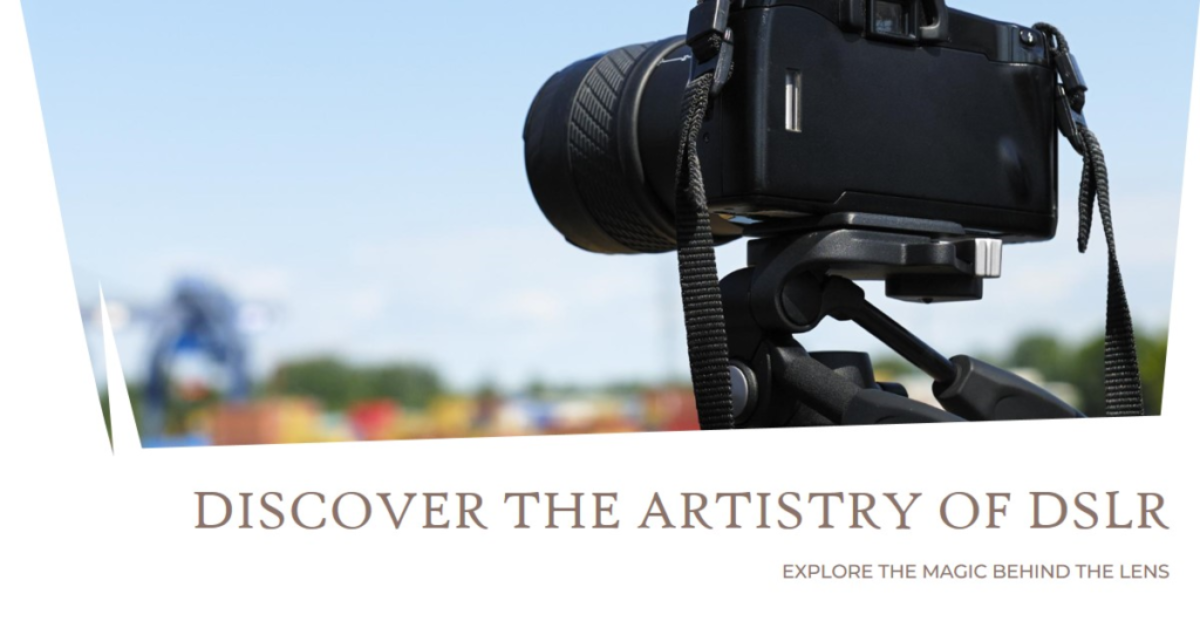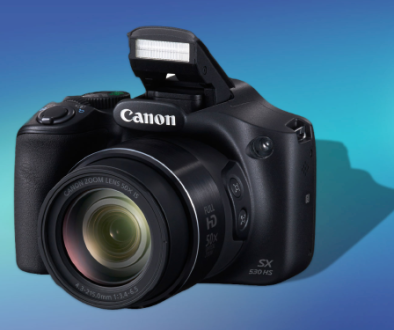The Magic of DSLR: Exploring the Artistry Behind the Lens
This is an era of smartphone photography. The convenience and immediacy of it dominate. However, the allure of the Digital Single-Lens Reflex (DSLR) camera remains as potent as ever. Smartphones have made photography accessible. However, the DSLR is a testament to the art and science of capturing light. It freezes moments and turns the ordinary into the extraordinary.

A Gateway to the Soul of Photography
At its core, the DSLR is more than a camera; it’s a portal to the very essence of photography. Unlike point-and-shoot cameras or smartphones, the DSLR gives photographers great control. They have control over every aspect of creating an image. Photographers can adjust the aperture. They can fine-tune the shutter speed and manipulate the ISO. The DSLR enables them to shape light and shadow to their will.
The camera’s intricate design enables this control. The DSLR has a reflex mirror at its heart. It is a marvel of engineering. It reflects light from the lens into the viewfinder. This lets photographers see exactly what the lens sees. It ensures accurate framing and focus. Pressing the shutter button flips up the mirror. This exposes the image sensor to light and captures the photograph.
The Dance of Light and Technology
The DSLR’s image sensor is a symphony of technology. It is a canvas where light becomes digital data. This sensor is much larger than those in smartphones. It can capture more light and detail. This translates to superior image quality, particularly in challenging lighting conditions. The bigger sensor also helps in low-light conditions. It improves dynamic range as well. This enables cameras to capture detail in shadows and highlights.
The sensor’s size is crucial for achieving the coveted shallow depth-of-field effect. The subject stands out with crisp definition against a blurred background. This effect is a hallmark of DSLR photography. It adds a touch of magic and depth to portraits, still lifes, and even landscapes.
Lenses: The Eyes of the DSLR
The DSLR’s body is important. However, it’s the lenses that unlock the camera’s potential. Lenses are the eyes of the DSLR, each with its own unique perspective and character. Wide-angle lenses capture expansive vistas. Telephoto lenses bring distant subjects up close. Lens selection transforms a photo’s atmosphere and emotional tone.

| Lens Type | Focal Length | Purpose | Example |
|---|---|---|---|
| Wide-Angle | Short | Landscapes, architecture, interiors | 14mm, 24mm |
| Standard | Medium | General purpose, street photography, portraits | 35mm, 50mm |
| Telephoto | Long | Wildlife, sports, portraits | 70-200mm, 100-400mm |
| Prime | Fixed | Sharpness, low-light performance, bokeh | 35mm f/1.8, 85mm f/1.4 |
| Zoom | Variable | Versatility, convenience | 24-70mm, 70-200mm |
| Macro | Varies | Close-up photography, details | 100mm macro |
| Tilt-Shift | Varies | Perspective correction, miniature effects | 17mm, 24mm Export to Sheets |
A Legacy of Innovation: DSLRs in the Digital Age
DSLRs were not always digital. They evolved from film SLR cameras. SLRs revolutionized photography in the mid-20th century. The transition to digital occurred in the late 1990s and early 2000s. It brought even more control and creativity for photographers. Mirrorless cameras have become popular. However, many photographers still use DSLRs. They like the DSLR’s many lenses, strong build, and long battery life.
While bridge cameras like the Canon PowerShot SX530 HS offer impressive zoom capabilities and features, DSLRs remain a powerful tool for many photographers due to their extensive lens selection, robust build quality, and long battery life. For an in-depth look at the capabilities of a bridge camera, you can read our Canon PowerShot SX530 HS review.
DSLR vs. Mirrorless: A Quick Comparison
| Feature | DSLR | Mirrorless |
|---|---|---|
| Viewfinder | Optical (through-the-lens) | Electronic (digital display) |
| Autofocus System | Typically uses dedicated phase-detection sensors (faster) | Mostly contrast-detection (can be slower in some situations) |
| Size and Weight | Generally larger and heavier | Generally smaller and lighter |
| Lens Selection | Extensive native lens options | Growing but still fewer native options |
| Battery Life | Typically longer | Typically shorter Export to Sheets |
Beyond the Technical: The Art of Storytelling
The technical aspects of DSLR photography are important. But it’s the artistry and storytelling that elevate it to another level. A great photo is more than just pixels. It’s a frozen story, a window into a moment lost to reality’s fleeting nature.
DSLR photographers wield their cameras as brushes. They paint with light to evoke emotions, spark curiosity, and challenge perspectives. They capture the brief beauty of a sunset. They show the raw power of a storm. They convey the tender closeness of a portrait. They reveal the endless joy of a candid moment.
The DSLR: Your Creative Companion
The world is full of digital images. The DSLR still holds a special place in the hearts of photographers and fans. It’s a tool that demands patience, skill, and a deep understanding of light and composition. It’s a medium that rewards those who are willing to invest the time and effort to master its intricacies.
- Beginners: If photography is new to you, don’t feel intimidated! Start with the basics. Learn about aperture, shutter speed, and ISO. ISO is part of the “exposure triangle”. Experiment with different settings and lenses to find your style. There are countless resources available online and in books to guide you.
- For Enthusiasts: Explore advanced techniques. These include long exposure photography, which captures light trails or smooth water. Moreover, try HDR imaging, which combines many exposures for greater detail. Alternatively, try astrophotography, which photographs the night sky. Consider investing in specialized lenses or accessories to expand your creative horizons.
- For Professionals: DSLRs are still the workhorse of many professional photographers. They offer the control and image quality that clients demand.
FAQs About DSLR Photography
Q: What is the main advantage of a DSLR camera over a smartphone camera?
- DSLRs offer better image quality. They also offer more control over settings and interchangeable lenses for versatility. They also perform better in low-light conditions.
Q: Do I need a DSLR camera to take good photos?
- No, you can take great photos with any camera, including smartphones. However, DSLRs offer more creative control and potential for high-quality results.
Q: What are the best DSLR camera brands?
- Canon, Nikon, and Sony are some of the most popular DSLR brands, each with its own strengths and weaknesses.
Q: Is DSLR photography difficult to learn?
- Like any skill, DSLR photography takes time and practice to master. However, with the right resources and dedication, anyone can learn. They can learn to take stunning photos.
Take the Plunge: If you’re ready to start a journey of creative exploration, consider getting a DSLR. You could even get a mirrorless camera. It’s an investment. It will give you a lifetime of stunning images and memories you won’t forget.

